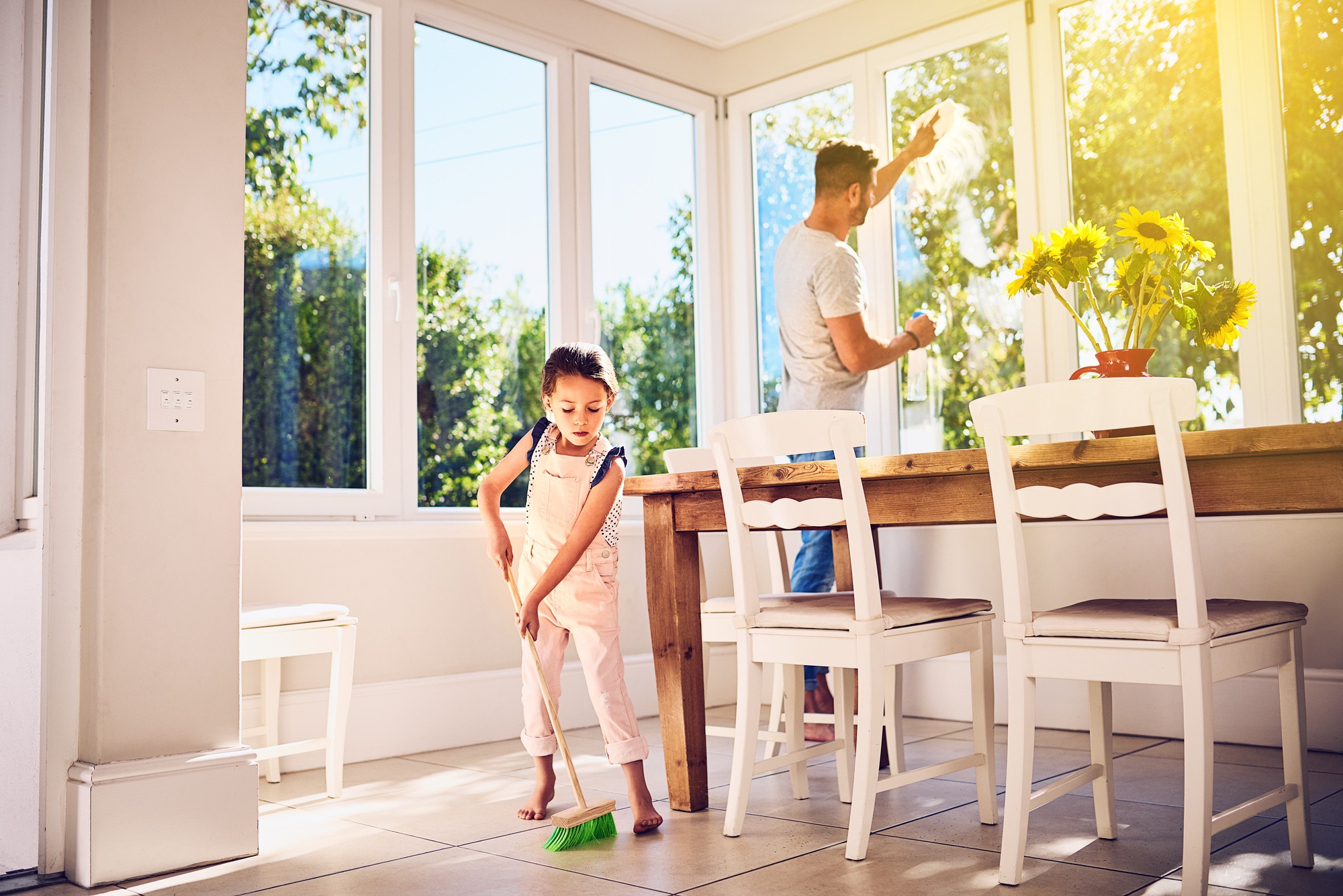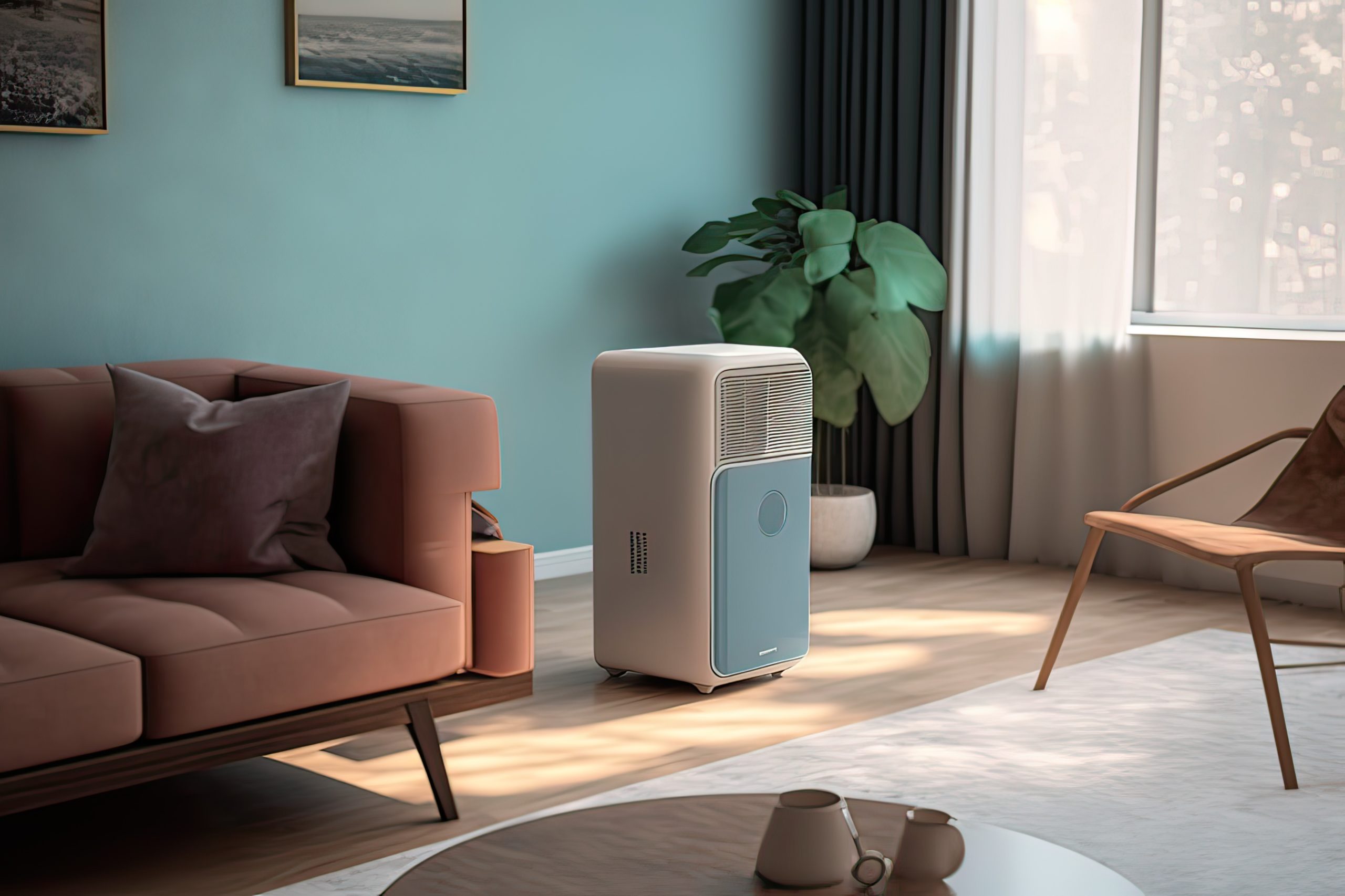Imagine a home where every breath contributes to better health. This is the essence of a healthy indoor environment. In this article, seven transformative tips will be presented. Each tip serves as a tool, a stepping stone toward creating a healthier, safer space for your loved ones. The aim is to transform the home into a sanctuary of well-being. So, get ready. The journey toward a healthier home environment starts with this article.

Ensure Proper Ventilation
Ventilation is a key factor in maintaining a healthy indoor environment. It works to replace indoor air with fresh outdoor air, helping to dilute airborne contaminants.
Improving indoor air circulation can be achieved through simple methods. Opening windows and doors when the weather allows is a straightforward approach. This act alone can significantly enhance air quality.
Another method is cross-ventilation. This involves opening windows or doors at opposite ends of the home, creating a natural airflow. This airflow helps to expel stale air and draw in fresh air. In areas with limited natural ventilation, exhaust fans can be beneficial.
Invest In A Quality Air Purifier
Investing in a quality air purifier can be a game-changer for indoor air quality. Air purifiers work to remove airborne contaminants, contributing to a cleaner, healthier indoor environment. They can filter out dust, allergens, and even microscopic pollutants that are hard to eliminate through ventilation alone.
When looking for the best air purifier, several factors come into play. The size of the room it will be used in, the types of pollutants it can filter, and its noise level are all important considerations. Additionally, look for features like filter replacement indicators and adjustable fan speeds. Making an informed choice can help ensure that the air purifier effectively contributes to a healthier home.
Control Humidity Levels
Managing humidity levels is an essential measure in promoting a healthier indoor environment. Elevated humidity can foster the proliferation of mold and dust mites. Conversely, low humidity can lead to dry skin and respiratory issues
Maintaining optimal humidity levels is a balancing act. The ideal indoor humidity level is between 30% and 50%. To monitor this, a simple hygrometer can be used. If humidity levels are consistently high, a dehumidifier can help. On the other hand, if the air is too dry, a humidifier can add the necessary moisture. Regularly checking and adjusting humidity levels can significantly improve the overall health of the indoor environment.
Use Natural Cleaning Products
Using natural cleaning products is another effective strategy for a healthier home. Many conventional cleaning products contain chemicals that can contribute to indoor air pollution. These chemicals can cause allergic reactions, respiratory issues, and other health problems when inhaled.
Switching to natural alternatives can help mitigate these risks. Many effective cleaning solutions can be made from common household items. For example, vinegar and baking soda can be used for a variety of cleaning tasks.Lemon juice is another powerful natural cleaner. Essential oils can also be added for their antimicrobial properties and pleasant scents.
Keep Indoor Plants

Keeping indoor plants can be a beautiful and beneficial addition to a home. Indoor plants not only enhance the aesthetic appeal of a space but also contribute to improved air quality. They absorb carbon dioxide and release oxygen, helping to freshen the air. Some plants can even filter out common volatile organic compounds.
When choosing indoor plants, consider those that are easy to care for and known for their air-purifying qualities. Spider plants, snake plants, and peace lilies are all excellent choices. These plants are not only hardy and low-maintenance but also effective at improving indoor air quality. Incorporating indoor plants into the home is a natural and visually pleasing way to promote a healthier indoor environment.
Regularly Clean And Dust Your Home
Regular cleaning and dusting are a fundamental part of maintaining a healthy indoor environment. Dust and dirt can accumulate over time, harboring allergens and contributing to poor air quality. Regular cleaning helps to keep these pollutants in check.
Effective dusting and cleaning can be achieved with a few simple strategies. Use a damp cloth for dusting to prevent dust from becoming airborne. Vacuum regularly, especially in high-traffic areas and on soft furnishings where dust can accumulate. Clean high-touch surfaces daily to reduce the spread of germs.
Lastly, don’t forget to clean air vents and replace air filters as needed. Regular and thorough cleaning can significantly improve the health of the indoor environment.
Maintain A Smoke-Free Environment
Maintaining a smoke-free environment is a vital aspect of a healthy home. Indoor smoking poses significant health risks. It introduces harmful pollutants into the air, which can lead to respiratory issues and other health problems.
Creating a smoke-free home involves a few key steps. If someone in the household smokes, encourage them to do so outside. Ensure proper ventilation during and after smoking to help clear the air. Air purifiers can also be used to help remove smoke particles from the air.For those looking to quit smoking, there are numerous resources and support systems available. A smoke-free home is not only healthier for smokers but also for everyone else in the household.
Conclusion
Taking steps toward a healthier home environment is a rewarding endeavor. The transformation may not be immediate, but the benefits will be long-lasting. It’s time to put these insights into action and witness the positive impact on the health and well-being of your loved ones.
Hey welcome to my blog . I am a modern women who love to share any tips on lifestyle, health, travel. Hope you join me in this journey!

Speak Your Mind